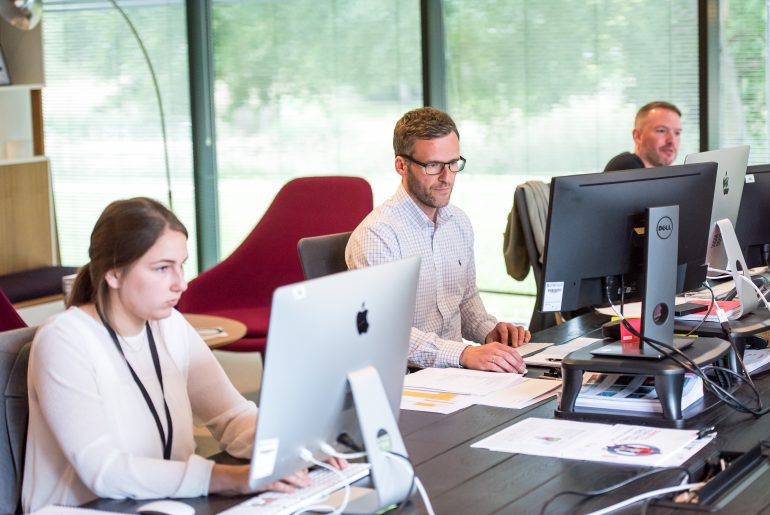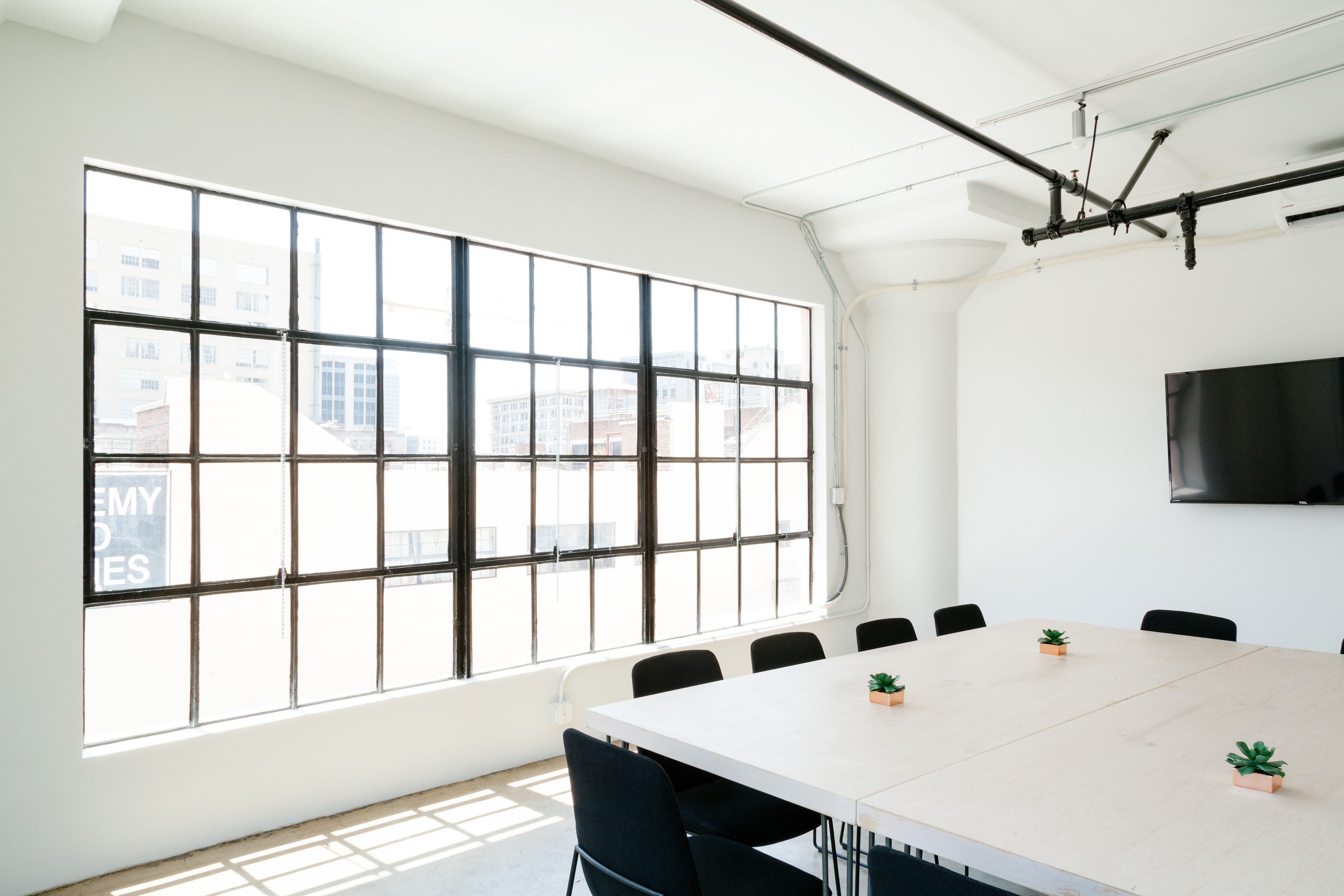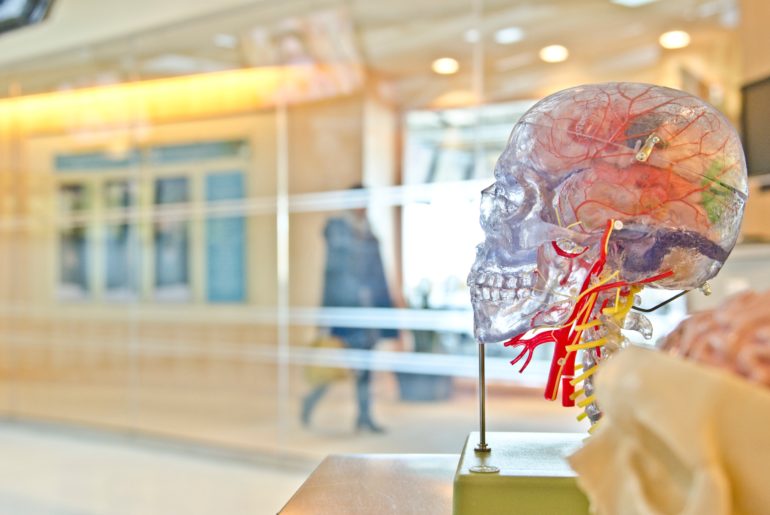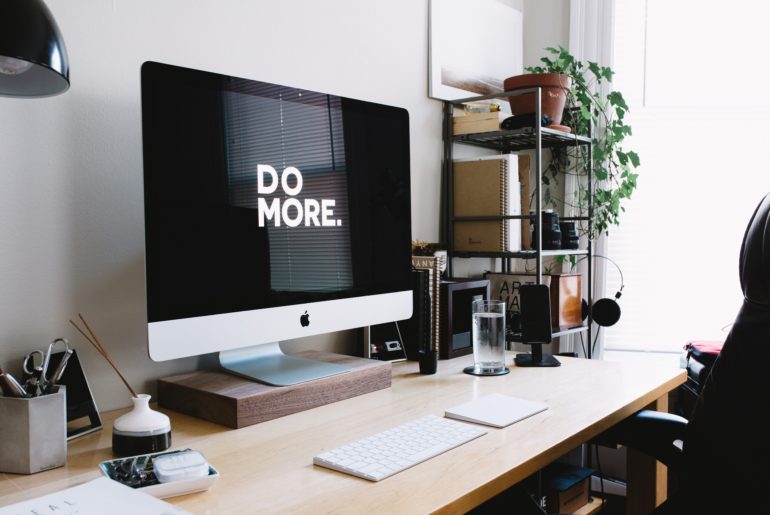BeUpstanding wants to help make workplaces everywhere more dynamic, active, and healthy. Built on a foundation of over ten years of research signalling the benefits of sitting less and moving more in the workplace, the BeUpstanding program was designed to change the way we work and think about our health for the better. But if we know that an “upstanding” workplace culture is a healthier workplace culture, how do we get the word out? And, maybe more importantly, how do we make it stick? Large scale behaviour change, like behavioural public health interventions, are understandably very difficult to implement—but here’s the gist. Firstly, we need to consider who we can help the most. Even though it would be great to help everyone affected, finding target populations of those particularly “at-risk” helps interventions target resources where there can be maximum benefit. Target populations are found during the research stage of program development, long before the implementation of an intervention. Our VicHealth review in 2012 helped to identify desk workers as a key target population. Obviously, the dangers of spending most of your day sitting affect everyone, but the BeUpstanding champion toolkit particularly targets workplaces and organisations. This is where sedentary behaviour…
Standing Up To Sedentary Working
The following article was written by Sophie O’Connell and published in Occupational Health and Wellbeing on the 7th June 2019. The modern world and the constant pursuit of technological growth have almost eliminated the need for movement in our daily lives. While commuting we sit in our cars or on the bus; at work we sit at our computers or in meetings; during our leisure time we sit watching TV, playing computer games or socialising with friends. Because of technology advancements we do not even need to leave the comfort of our own homes to socialise, stay in touch with friends and family, to shop, to work or even be entertained on a screen. This means that, on average, Brits spend around 9.5 hours a day spent sitting. Typically, the amount of time spent sedentary each day increases with age. In working-age adults much of this sitting is done at work. Evidence shows that office-based workers spend around 75% of their working day sitting, with a third of sitting time being done for a prolonged period. Many of us are guilty of spending time sitting for extended periods due to work, travel or various social commitments. But with the growing…
Direct Healthcare Costs Of Sedentary Behaviour In The UK
The following press release originally appeared on the BMJ Newsroom and was published on March 23rd 2019. Spending large amounts of time sitting or lounging around during the day is linked to around 70,000 deaths per year in the UK and the NHS spends in excess of £0.7bn per year treating the health consequences, suggests research from Queen’s University Belfast and Ulster University published online in the Journal of Epidemiology & Community Health. A large proportion of the UK population have sedentary jobs and leisure activities, and official physical activity recommendations regarding sedentary behaviour are vague. Previous studies have shown that spending large parts of the day sitting down increases the risk of cardiovascular disease, type 2 diabetes, cancer and death and is a burden on health services. But no estimate of the financial impact that sedentary behaviour has on the NHS has been calculated, so the authors set out to do just that. Figures calculated by other researchers on the impact sedentary behaviour has on the relative risks of five specific health conditions (type 2 diabetes, cardiovascular disease, colon cancer, endometrial cancer and lung cancer) and deaths from all causes were combined with figures on the percentage of adults…
The Truth Behind the Standing-Up-at-Work Movement
This article, written by Thea O’Connor, was originally published in INTHEBLACK on November 1, 2018. You can read the original article here. How can you make the shift from spending three-quarters of the day sitting to a more dynamic way of working? Researchers and workplace practitioners are standing up for standing. Whenever Sydney-based CPA Jennifer Bachir answers the phone or reads a document at work, she stands. “I have a very sedentary job and can sit for up to three hours at a time,” says Bachir of Key Financial Consulting. “When I became aware of the health risks of prolonged sitting, I developed the habit of standing for 15 minutes every hour.” Bachir found that adding standing to her exercise routine of going to the gym four times a week makes her feel much better, and she has no doubt about the brain benefits of standing on the job. “When I stand up to talk to clients on the phone, I’m more alert,” she says. “It also makes a difference to the tone of my voice – I’m more assertive.” The average office worker today is more immobile than at any other point in human history. Hunter-gatherers walked an average of 15 kilometres…
Standing For Brain Health
A new cross-sectional study by Prabha Siddarth et al. found that the number of hours of sitting per day is inversely correlated with medial temporal lobe (MTL) thickness. In simpler terms, the more you sit, the thinner your MTL and its subregions (entorhinal cortex, parahippocampal cortex, and subiculum). This is important because the MTL plays a key role in memory function and a decrease in MTL has been linked to memory disorders such as Alzheimer’s disease. The study was conducted at UCLA in the Semel Institute for Neuroscience and Human Behavior and participants consisted of middle-aged and older adults aged 45-75. Participants were extensively screened through the Mini-Mental State Examination, BMI, APOE genotyping, and the Hamilton Ration Scales for Depression and Anxiety. Participants were excluded if they had, “a lifetime history of dementia, major psychiatric or neurologic disorders, alcohol or substance abuse, head trauma or systemic disease affecting brain function, or uncontrolled hypertension or cardiovascular disease”, or if they had anxiety or depression disorders. Participants completed a validated self-reported questionnaire (The IPAQ-E) to record the amount of time spent sitting and in physical activity. In addition, each participant had an MRI scan to measure the MTL and its subregions. Statistical analysis of the MRI’s…
What About Productivity?
Often when we talk about sitting less, people get concerned about productivity. There’s a belief that to maximize work performance, you’ve got to be doing your work seated. However, just because you are standing up, sitting less, and moving more doesn’t mean your work productivity will decrease. Research often begins in the laboratory so let’s start there too. In one laboratory study, researchers found no differences in cognition when comparing standing to sitting. No differences were also found when examining computer mouse and keyboard performance. In terms of actual productivity measures, improvements have been shown when sitting was broken up with standing in a simulated office environment. Of course, work productivity in the laboratory might be different than productivity in your office. So, what happens when we look at productivity measured in actual workplaces? Overall, research has found that standing desks do not impact work productivity (examples 1, 2, and 3). In fact, in a recent study, we found some employees felt productivity actually improved! It’s not so cut and dry, though. Individual variability and job specific work tasks influence how much standing workstations impact productivity. It can take 2 weeks to adjust to a new workstation but standing can still…






